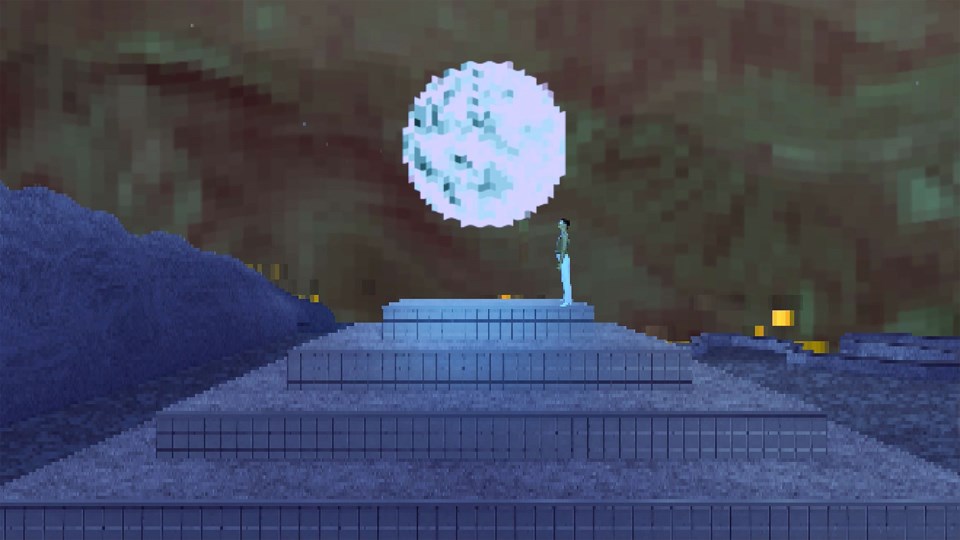A new group exhibition opening at North Vancouver’s Polygon Gallery next month explores the relationship between humans, technology, and ecology, by artists who use technology to push the limits of their chosen mediums.
Opening on June 3, Ghosts of the Machine was put together by curator Elliott Ramsey after Ramsey began exploring the interplay between virtual reality and real life after last summer’s exhibit, Interior Infinite.
“The term ‘ghost in the machine’ refers to the mind-body duality – the idea of the ‘mind’ as software inhabiting the ‘body’ as hardware,” Ramsey said. “Such binaries aren’t real. The mind doesn’t exist without the body. The same can be said about technology. We try to split the ‘virtual world’ from the ‘real world,’ but virtual spaces rely on material hardware – with ecological implications – and are experienced physically. Similarly, we have real social and political interactions on digital platforms. We can’t constrain reality into ‘real’ and ‘virtual.’ We end up sliding across these boundaries like ghosts through walls.”
Featuring a new commission by Sḵwx̱wú7mesh Úxwumixw (Squamish Nation) member T'uy't'tanat Cease Wyss, in addition to works by Ho Tzu Nyen, Juliana Huxtable, Anne Duk Hee Jordan, Lu Yang, Skawennati (Mohawk), and Santiago Tamayo Soler, Ramsey said it was work by Lu and Soler that made him think further about a “non-binary” show.
“And so after some investigation around this idea for a show … it takes this idea of IRL, that acronym we use all the time – 'in real life' – and asks, ‘What does real life mean?’” he explained. “How our digital interactions and online experiences are not real, our online fears are shaped by and dictated by our social and environmental and ecological conditions offline. And they, in turn, shape these things offline.
“There's this closed feedback loop between the online and offline spheres.”
Ramsey said often when people think of the “cloud,” they envision a magic cloud where data gets stored, when in actual fact it’s massive hard drives dotted in even bigger warehouses around the world “that consume a lot of fossil fuel and electricity.”
“We need our physical bodies to convince us of stimulus inputs we receive in virtual reality. So it's very physical. But then when you think about the technology that's needed every time there's going to be a software upgrade, there's going to need to be a hardware upgrade, there's e-waste, there's intensive mining that needs to happen.”
The artists featured in the exhibition use various sorts of cyborg and technical images to create their work, but Ramsey noted that through their works, they are creating commentary about life offline.
“They make an interesting group for an exhibition. On the one hand, you feel like you're really stepping into this otherworldly experience. But then you start seeing the signs, the references back, [like a] closed feedback loop, constantly circling back in on itself,” he said.
Skawennati has been using a Second Life, an online virtual reality world, to create and imagine what a safe space for her community could look like, including knowledge and language sharing.
“She's really a wonderful example of how these technologies are in service and relation, in response to a lived offline experience,” Ramsey said.
Ramsey noted that Wyss, along with fellow Indigenous Matriarchs 4 (IM4) member, Tracey Kim Bonneau (Syilx), are using cutting edge technology to explore timeless traditions and bring back longstanding knowledges in new ways.
“What was really amazing [about] talking to Cease Wyss and Tracey Kim Bonneau was from a settler-colonial perspective, nature and technology tend to be sort of cast as these diametrically opposite scenes, but from her perspective [as a Sḵwx̱wú7mesh matriarch] in her teaching and in her knowledge-holding, nature is the most advanced technology that we have, and she's absolutely right.”
Ghosts of the Machine
When: June 3 to Aug. 14
Where: The Polygon Gallery, 101 Carrie Cates Ct, North Vancouver, BC V7M 3J4
Cost: Admission is by donation




